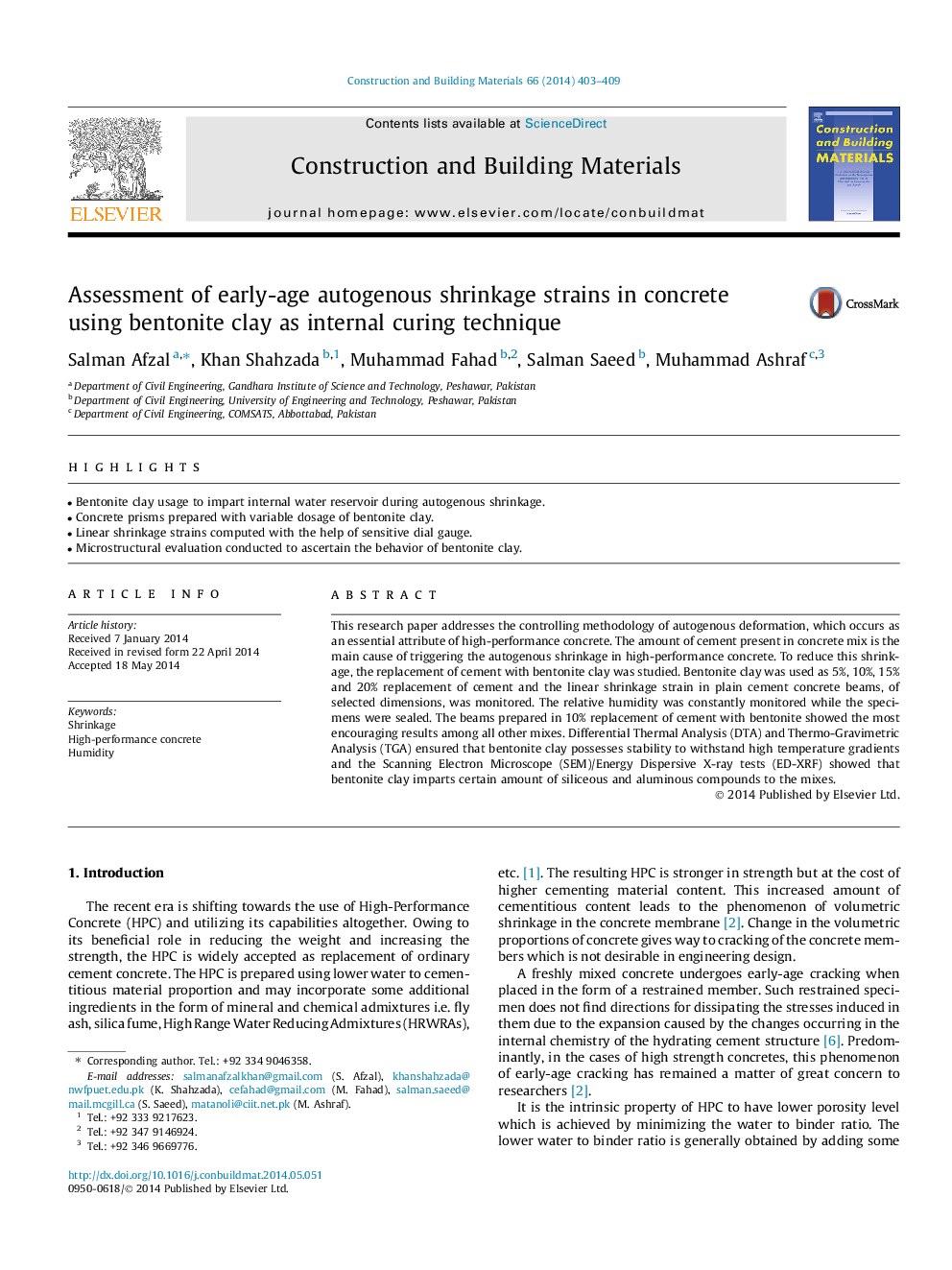| Article ID | Journal | Published Year | Pages | File Type |
|---|---|---|---|---|
| 6722763 | Construction and Building Materials | 2014 | 7 Pages |
Abstract
This research paper addresses the controlling methodology of autogenous deformation, which occurs as an essential attribute of high-performance concrete. The amount of cement present in concrete mix is the main cause of triggering the autogenous shrinkage in high-performance concrete. To reduce this shrinkage, the replacement of cement with bentonite clay was studied. Bentonite clay was used as 5%, 10%, 15% and 20% replacement of cement and the linear shrinkage strain in plain cement concrete beams, of selected dimensions, was monitored. The relative humidity was constantly monitored while the specimens were sealed. The beams prepared in 10% replacement of cement with bentonite showed the most encouraging results among all other mixes. Differential Thermal Analysis (DTA) and Thermo-Gravimetric Analysis (TGA) ensured that bentonite clay possesses stability to withstand high temperature gradients and the Scanning Electron Microscope (SEM)/Energy Dispersive X-ray tests (ED-XRF) showed that bentonite clay imparts certain amount of siliceous and aluminous compounds to the mixes.
Related Topics
Physical Sciences and Engineering
Engineering
Civil and Structural Engineering
Authors
Salman Afzal, Khan Shahzada, Muhammad Fahad, Salman Saeed, Muhammad Ashraf,
